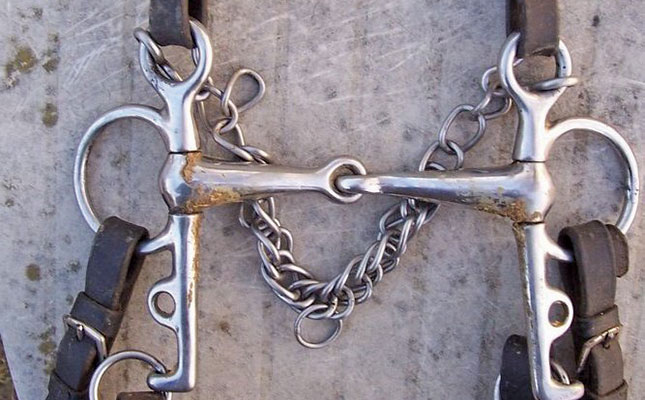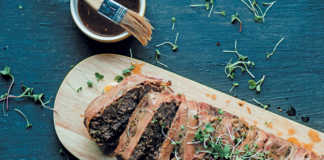
Photo: Alex Brollo
There are two types of bits: snaffles, which apply direct pressure to the tongue and bars (a toothless area of gums on which the bit rests) of the mouth; and curb bits, which work mainly on the lower jaw, poll and chin groove, as well as the roof of the mouth.
Curbs bit are generally used in Western riding, but are also used on English double bridles. This bit has three parts: the mouthpiece; shanks on each side; and the curb chain/strap.
Mouthpieces and shanks
The severity of the curb bit partly depends on the mouthpiece design. A curb bit with a curved mouthpiece, which only acts on the tongue and bars of the horse’s mouth, is considered very mild.
Other mouthpieces, such as those with wide ports, relieve tongue pressure, while those with higher and narrower ports act on the roof of the mouth, causing the horse to arch its neck and drop its head.
The mouthpiece can also be jointed (snaffle) with slightly curved bars.
A spade bit has a modified, flattened port set at a slightly different angle, which acts directly on the roof of the mouth, poll and chin, and places less pressure on the bars.
This type of bit can be very severe in the hands of inexperienced riders or if the shanks are too long, as the severity of the bit is directly related to the length of the shanks.
Shanks can be straight or curved. Above the mouthpiece, the shank is attached to the bridle and the length of this part of the shank directly affects the severity of the pressure on the horse’s poll. The lower half of each shank is attached to each rein.
Pulling on the reins tightens the curb strap that runs under the horse’s chin, while there is a lever effect on the poll, with the mouthpiece acting as a fulcrum.
Width and curb chain type also have an effect on the severity of the bit. The mildest curb chain is made of flexible leather and is at least 1cm broad. If used, it should lie flat.
The tightness of the curb chain should be tested by putting the bridle on the horse and gently pulling the reins.
The curb chain should tighten very gently against the horse’s chin when his head is held in the correct position. Show rules prohibit narrow or rolled chin straps, and double or twisted curb chains.
Western riding
In Western riding, horses are generally started in a bosal or snaffle at three years old, and only put into a curb at five. In Western disciplines, the curb bit is intended to be used one-handed in conjunction with neck reining.
It is for the advanced horse ridden by a rider who is able to maintain control using only balance and the fingertips of one hand, or even draping the reins over the pommel while roping a cow.
Dr Mac is an academic, a practising equine veterinarian and a stud owner.











